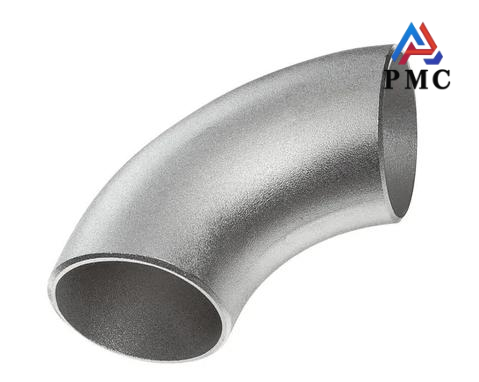
Common Standards for Stainless Steel Elbows
Stainless steel elbows, as a very common pipe fitting in the pipeline system, are mainly used to change the flow direction of the fluid and the direction of the pipeline. They are an indispensable and important component in pipeline connections. In actual pipeline laying, when the direction of the pipeline needs to be changed, stainless steel elbows can come in handy to allow the pipeline to turn smoothly and ensure normal fluid transmission. It is mainly made of stainless steel, common ones are 304 stainless steel, 316 stainless steel, etc.
Sizes and specifications of stainless steel elbows
1. Nominal diameter (DN)
Indicates the nominal size of the inner diameter of the pipe (unit: mm), such as DN15 (4-branch pipe), DN100 (4-inch pipe), which needs to match the pipeline system.
2. Nominal pressure (PN)
Reflects the maximum working pressure that the elbow can withstand (unit: MPa). Common grades include PN1.6, PN2.5, PN16, etc., and need to be selected in combination with the medium pressure.
3. Bending radius (R)
The radius of the center arc of the elbow is divided into long radius (R=1.5D) (small flow resistance, widely used) and short radius (R=1D) (space saving, used in restricted scenarios).

Materials and performance of stainless steel elbows
1. Mainstream materials:
304 stainless steel (06Cr19Ni10): resistant to weak corrosion (water, air), cost-effective, suitable for general scenarios.
316/316L stainless steel (06Cr17Ni12Mo2): contains molybdenum, resistant to strong corrosion (seawater, chemical media), and has better high-temperature performance.
Special materials: such as 321 (high temperature resistance) and 347 (intergranular corrosion resistance), used in special working conditions.
2. Key Performance Indicators
Corrosion resistance: verified by intergranular corrosion test (such as GB/T 4334 standard).
Mechanical properties: yield strength ≥ 205MPa, tensile strength ≥ 520MPa (taking 304 as an example), must meet the requirements of ASTM/AISI and other standards.
Common Standards for Stainless Steel Elbows
1. ASTM standard
ASTM is a standard formulated by the American Society for Testing and Materials. Its stainless steel elbow standards mainly include ASTM A403 and ASTM B366. Among them, ASTM A403 is suitable for elbows under high temperature, high pressure and corrosion conditions, while ASTM B366 is suitable for marine environments or occasions with high amounts of oxides.
2. ASME standard
ASME is a standard formulated by the American Society of Mechanical Engineers. Its stainless steel elbows have the advantages of high strength, high temperature, high pressure and corrosion resistance, and are widely used in nuclear power plants, petrochemical and other fields. The most common ASME standards are B16.9 and B16.28. B16.9 is suitable for the connection of large pipes, while B16.28 is suitable for small-diameter pipes.
3. DIN standard
DIN standard is a standard formulated by the German National Standardization Organization, which is mainly applicable to the production and use of stainless steel elbows in Europe. Among them, DIN2605 is applicable to elbows at normal temperature and pressure, while DIN2609 is applicable to high temperature and high pressure pipes.
4. JIS standard
JIS standard is a standard formulated by the Japanese Industrial Standards Organization. Its main standards for stainless steel elbows include JIS B2311, JIS B2312, JIS B2313, etc. Among them, JIS B2311 is applicable to normal pressure elbows with a pressure lower than 20kgf/cm², while JIS B2312 is applicable to high pressure elbows with a pressure greater than 20kgf/cm².
Select stainless steel elbows that meet the standards for reference:
1. Identify working conditions: select materials (304/316L) according to the medium (such as the degree of corrosion), match the nominal diameter (DN) and pressure level (PN/Sch) according to pressure and temperature, and long radius elbows (R=1.5D) are preferred for scenarios with large flow rates.
2. Check the standard system: For domestic projects, select the national standard (GB/T 12459, etc.); for exports, select the American standard (ASME B16.9), European standard (EN), etc. according to the region; confirm the material standard (such as ASTM A403) and dimensional tolerance.
3. Verification of quality documents: Material certificates, non-destructive testing reports (RT/PT), pressure test records are required. Imported parts require CE/ASME certification and customs declaration forms.
4. Check identification and process: the surface needs to be marked with standard number, material, specification and other information; for welded elbows, check welder qualifications and process assessment; for seamless elbows, confirm forging process.
5. Prefer compliant suppliers: Select manufacturers with pressure piping component qualifications and ISO certification, and conduct factory inspections or sample testing (spectral analysis, hardness testing) when necessary.
Read more: Things to Note when Purchasing Stainless Steel Elbows


